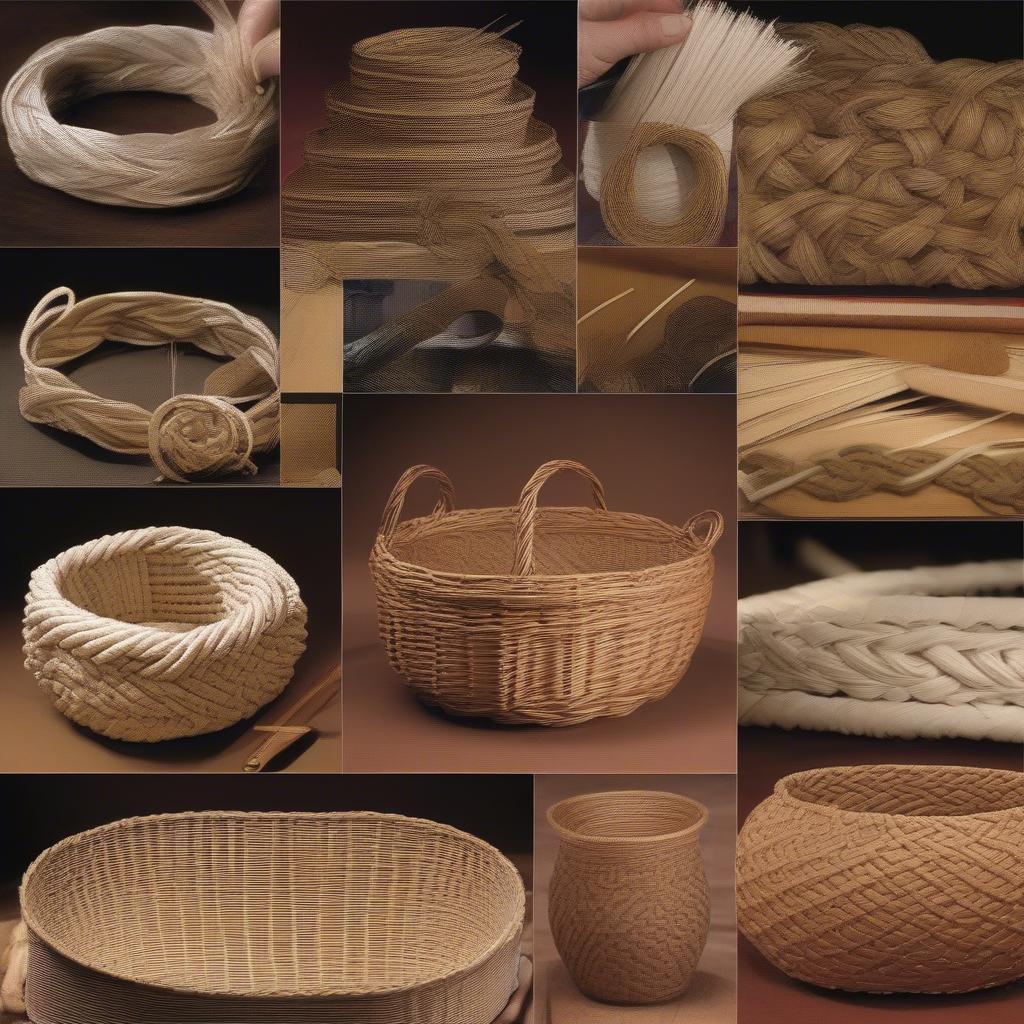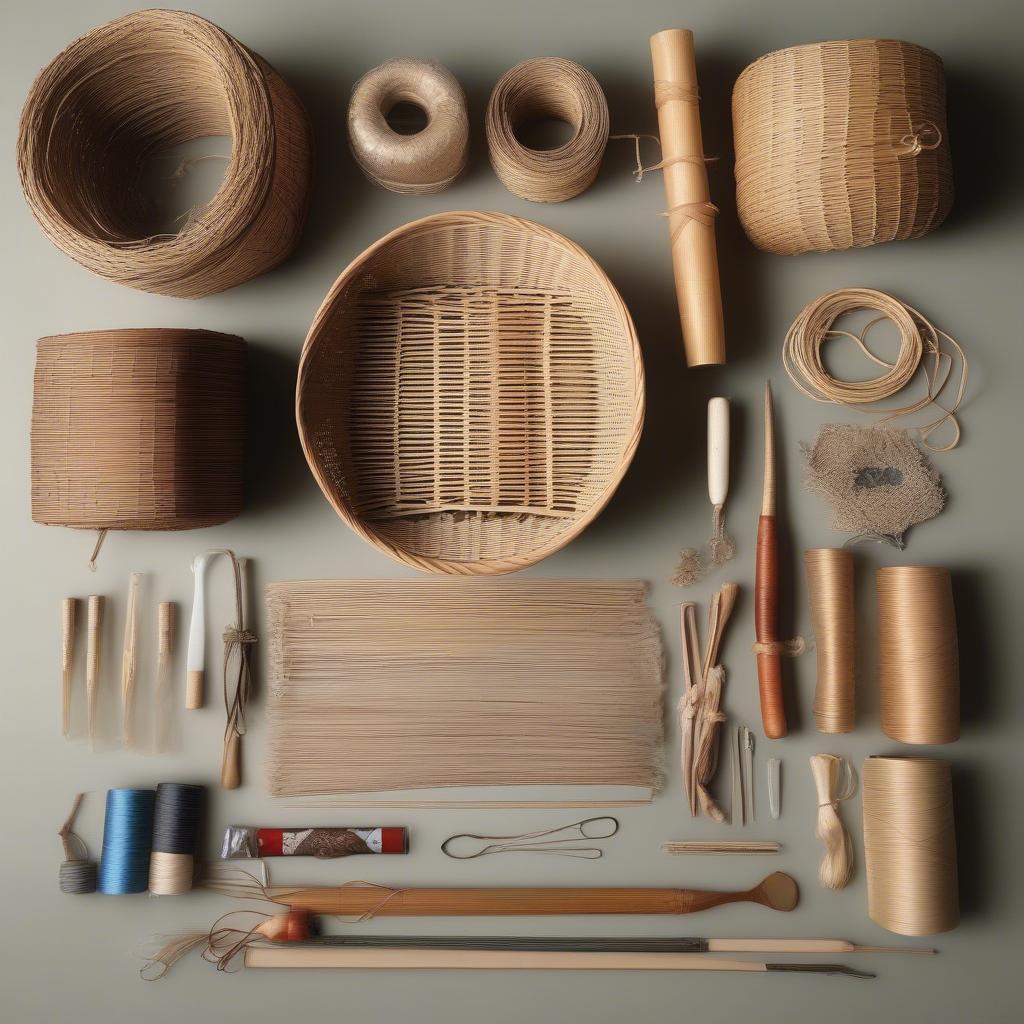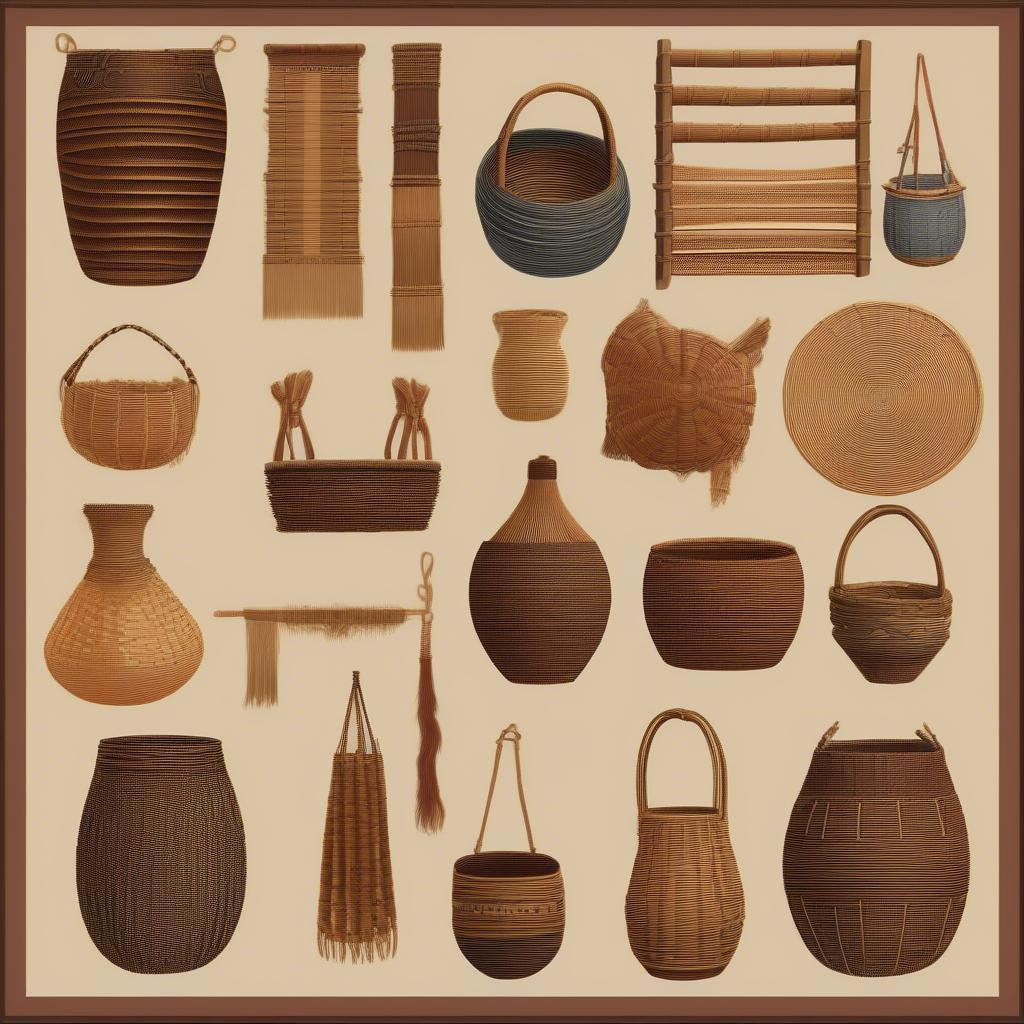Basket Weaving
Basket Weaving 101: Your Guide to Getting Started
Basket Weaving 101 is more than just a craft; it’s a journey into a world of creativity, where natural materials transform into beautiful, functional art. Whether you’re drawn to the rustic charm of wicker baskets or the intricate designs of rattan masterpieces, this guide will provide you with the foundation to begin your weaving adventure. basket weaving 101 starter kit offers a comprehensive set of tools and materials to get you started.
What is Basket Weaving?
Basket weaving is the ancient art of interlacing pliable materials to create a variety of containers and decorative objects. From simple gathering baskets to elaborate artistic creations, the possibilities are endless. Materials used range from readily available natural resources like willow and reed to commercially produced materials like rattan and wicker. The process involves manipulating these materials, often using specific weaving patterns, to build up the structure of the basket. This craft is rich in history and tradition, with different cultures around the world developing unique styles and techniques.
 Different Basket Weaving Techniques
Different Basket Weaving Techniques
Basket Weaving 101: Gathering Your Supplies
Before you begin your basket weaving 101 journey, you’ll need to gather some essential supplies. A good basket weaving 101 kit will usually contain everything you need to get started on a few basic projects. Key materials include:
- Weaving Material: Reed, willow, rattan, or wicker are common choices.
- Base: This can be a pre-made base or you can create one yourself using thicker material.
- Soaking Container: Natural materials often need to be soaked to make them pliable.
- Scissors or Pruning Shears: For trimming and shaping.
- Measuring Tape or Ruler: For accurate measurements.
- Awl: A pointed tool for making holes and guiding the weaving material.
 Essential Basket Weaving Supplies
Essential Basket Weaving Supplies
Basket Weaving 101: Basic Weaving Techniques
There are numerous basket weaving techniques, but a few fundamental ones form the basis for most projects. basket weaving steps provides a visual guide to these techniques. These include:
- Coiling: This involves wrapping a pliable material around a core, creating a spiral structure.
- Twining: Two or more weavers are twisted around each other as they encircle the spokes or stakes.
- Plaiting: This involves interlacing strands in an over-under pattern, similar to braiding.
“Starting with the basics is crucial. Mastering fundamental techniques like coiling, twining, and plaiting opens up a world of possibilities for more complex designs,” advises renowned basket weaver, Amelia Reed.
Exploring Different Materials: Wicker and Rattan
Understanding the characteristics of different materials is key to successful basket weaving. Wicker and rattan are two popular choices, each with its own unique properties.
- Wicker: Wicker refers to the weaving process itself, not a specific material. It can be made from a variety of natural or synthetic materials.
- Rattan: Rattan is a natural material derived from a type of palm. It’s strong, flexible, and readily available, making it a favorite among basket weavers.
“Choosing the right material is like selecting the right paintbrush for a painting. Each material lends a unique texture and character to the finished piece,” explains artisan basket maker, John Willowbrook.
Where Did it All Begin? The History of Basket Weaving
Basket weaving is one of the oldest crafts in human history. where is underwater basket weaving from delves into the origins and myths surrounding this craft. Archaeological evidence suggests baskets were created even before pottery, serving as essential tools for gathering, storing, and transporting goods.
 Ancient Basket Weaving
Ancient Basket Weaving
Basket Weaving 101: Conclusion
Basket weaving 101 provides a gateway to a rewarding and creative hobby. By learning the basics and experimenting with different materials and techniques, you can create beautiful and functional pieces that reflect your personal style. Remember to practice patience and persistence as you develop your skills. With each completed project, you’ll deepen your appreciation for this ancient craft and the artistry involved in transforming simple materials into works of art.
FAQs
- What is the easiest basket weaving technique for beginners? Coiling is often recommended for beginners due to its relative simplicity.
- What is the difference between wicker and rattan? Wicker refers to the weaving process, while rattan is a specific natural material.
- Where can I find basket weaving supplies? Craft stores, online retailers, and specialty basket weaving suppliers offer a variety of materials and tools.
- How long does it take to weave a basket? The time required varies depending on the size, complexity, and your experience level.
- What are some common basket weaving patterns? Common patterns include the French randing, twill, and wicker weave.
- Can I use recycled materials for basket weaving? Yes, many materials like newspaper, plastic bags, and fabric scraps can be used for weaving.
- Are there online resources for learning basket weaving? Yes, numerous websites, tutorials, and online courses offer instruction and guidance.
Common Basket Weaving Scenarios and Questions
- My reed is breaking. What am I doing wrong? It’s likely too dry. Soak it longer before weaving.
- My basket is uneven. How can I fix this? Pay close attention to tension and spacing while weaving.
- I’m struggling with a specific weaving technique. Where can I find help? Online tutorials or local basket weaving classes can provide guidance.
Further Exploration
For more information and resources, check out our other articles on basket weaving.
Contact us for support: Hanoi, Vietnam or Tech Avenue, Suite 12, San Francisco, CA 94105, USA. We have a 24/7 customer service team.
